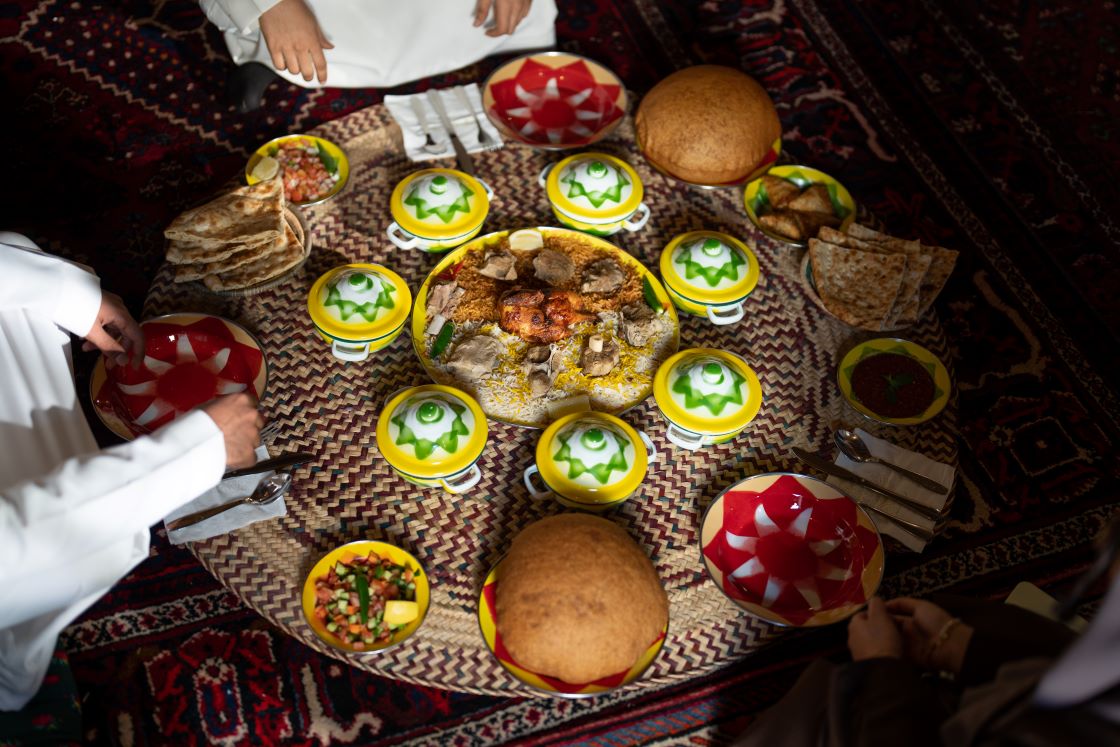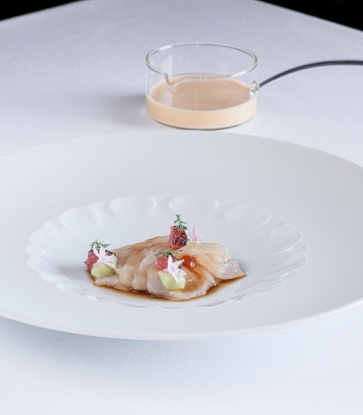To learn about this remarkable achievement, we head to Albert Town, a neighbourhood in Marsa, just south of the capital, Valletta. Like Valletta, it also boasts a deep inland harbour. Incidentally, Marsa is the Maltese word for “harbour”. The impetus for this particular rebirth was paradoxically given in an abattoir – in Il-Biċċerija, to be precise. This is the island’s only government-run abattoir. It is in this rugged, harsh, rather inhospitable setting between the waterfront and the sheds that are so typical for commercial ports that this curious culinary tale unfolds. This makes the context of the mazzit’s comeback all the more striking. For those who think that this is overstating the significance of this traditional sweet blood sausage with raisins, we would draw their attention to a widely used expression that highlights the uniqueness of this mazzita that is so deeply rooted in the Maltese language and culture: “Fl-aħħar tal-mazzita ssib iż-żbiba.” We will come back to the meaning of this later. But first things first.
Until recently, the mazzit, or sweet Maltese blood sausage, made with pig’s blood, onions, raisins and other ingredients including chocolate, seemed destined to live on only in this well-known Maltese proverb. However, the remarkable sweet yet savoury delicacy is experiencing a revival. And what a revival! In the spirit of intrigue, here’s a quiz question: Which was, until not so long ago, the only European Union member state to have no food products or wines recognised with a protected designation of origin (PDO) or protected geographical indication (PGI)? You guessed it: Malta – even though the island has a number of eligible products (wine has been certified since 2007, ed.).

To unravel this mystery, we head to Malta’s only abattoir, where, as its Director General, Stefan Cachia has taken charge of the mazzit’s destiny. “Until a year ago, this particularly tasty product could hardly be found at a butcher’s in Malta,” says the affable sausage rescuer. This man on a mission, who also has a keen interest in Malta’s history, immediately launches into a kind of eulogy to the blood sausage, with a rare passion. Stefan Cachia is the type of foodie who is so enthusiastic that he can tell a whole story, in detail and with relish, in response to just one question. “The mazzit, or traditional Maltese blood sausage, was for a long time very popular in households in Malta as an authentic artisanal foodstuff. In fact, it has been part of our food culture for centuries. Documents from the 18C prove that the mazzit was already known at that time, and there is a strong suspicion that this delicacy has been around for much longer still. The word mazzit is thought to have Greek etymology. Therefore, the blood sausage could have Byzantine origins and originally have been predominantly made in the southwest of the island, where a population with Byzantine roots lived.”
Blood sausage is a well-known delicacy throughout Europe today. Just think of the French boudin noir, English black pudding, German Blutwurst and Flönz from the Rhineland, Flemish beuling, Dutch bloedworst, Tuscan buristo and Spanish butifarra negra, to name a few. Besides these savoury specimens, there are also sweet-and-savoury blood sausages such as the Galician morcilla, which contains raisins, nuts, sugar and pine nuts. The Maltese mazzit is distinguished by its use of raisins, herbs and spices such as cinnamon, cloves and orange peel. “Mazzit is made from pig’s blood or the blood of young bulls,” explains Stefan Cachia. “Blood makes up about half of the recipe, followed by semi-wild, sweet white onions that typically grow in the southwest of Malta, and so they also have a historical connection to Byzantine communities that lived there. The most quintessential ingredient is the zibibbo raisin, made from a grape that grows in the southern part of the Mediterranean Sea on a number of islands, including Pantelleria, and produces remarkable wines. To make the sausage taste even sweeter and richer, butchers also add white sugar and milk chocolate, the percentages of which vary from recipe to recipe.”
The mazzit therefore had a number of qualities that made it eligible to be officially recognised and protected. But there was no approved recipe available as required to apply. “In order to be able to submit an application for recognition, we spoke to the last remaining butchers to produce it. A number of them have been producing on a very small scale in a number of villages for four or five generations,” said Stefan Cachia. Initially, these butchers were reluctant to share their recipes and expertise with the management of the only official slaughterhouse in Malta. Maybe they were worried about competition. That was until the butchers understood that the slaughterhouse management wanted to give them the opportunity to make mazzit according to their own recipes in state-of-the-art conditions, and to sell not only in their own butcheries, but also to third parties such as supermarkets, restaurants and hotels.

“We, as a government slaughterhouse, have successfully submitted an application to the EU for protective recognition of the mazzit, with the help of the butchers and the information they provided. At the same time, we have created a platform that allows them to produce mazzit safely, to strict standards and on a larger scale. And the butchers no longer have to come to us to pick up fresh blood; they can make the blood into blood sausage right here on site. As a result, the production of mazzit is experiencing a revival, and we are now seeing contemporary takes on it, such as burgers or mazzit buns – the blood sausage is traditionally eaten with potatoes and a fried egg.”
This is how the principle of short supply chains gave a dozen artisan butchers a safe working environment to make sausages according to their own recipes on a small scale for a wider public. And before we forget, we still have to tell you the meaning of that commonly used Maltese idiom that alludes to this blood sausage with raisins. Loosely translated: It’s always at the end of the mazzit that you find the raisin (the sweet part of the sausage). In other words, one shouldn’t get one’s hopes up too much, because one might end up being disappointed. But that would be a very subjective take on the secret behind this sweet treat.



















